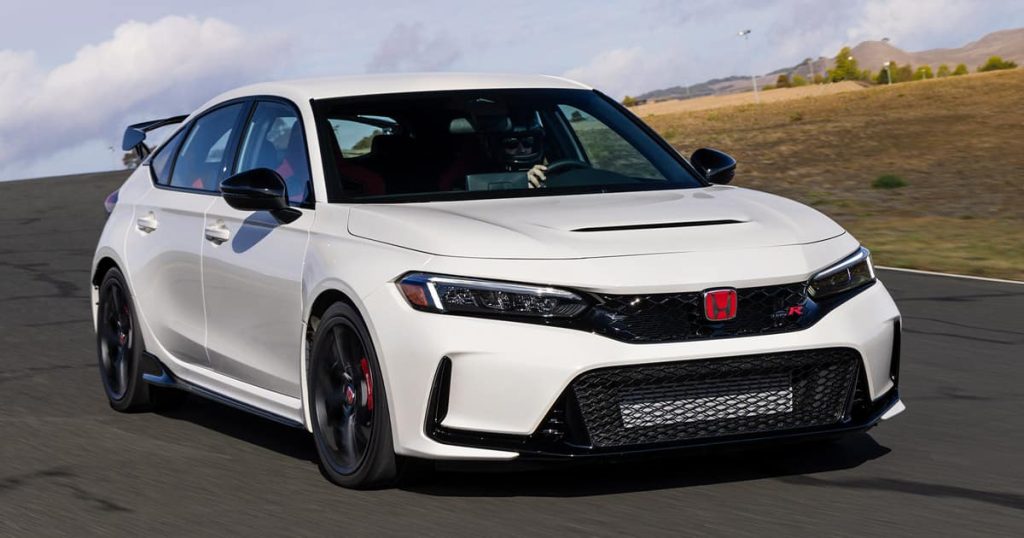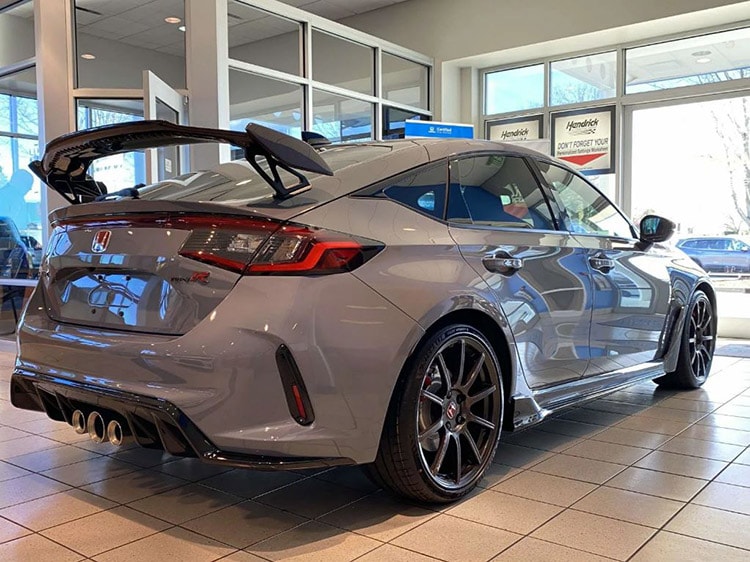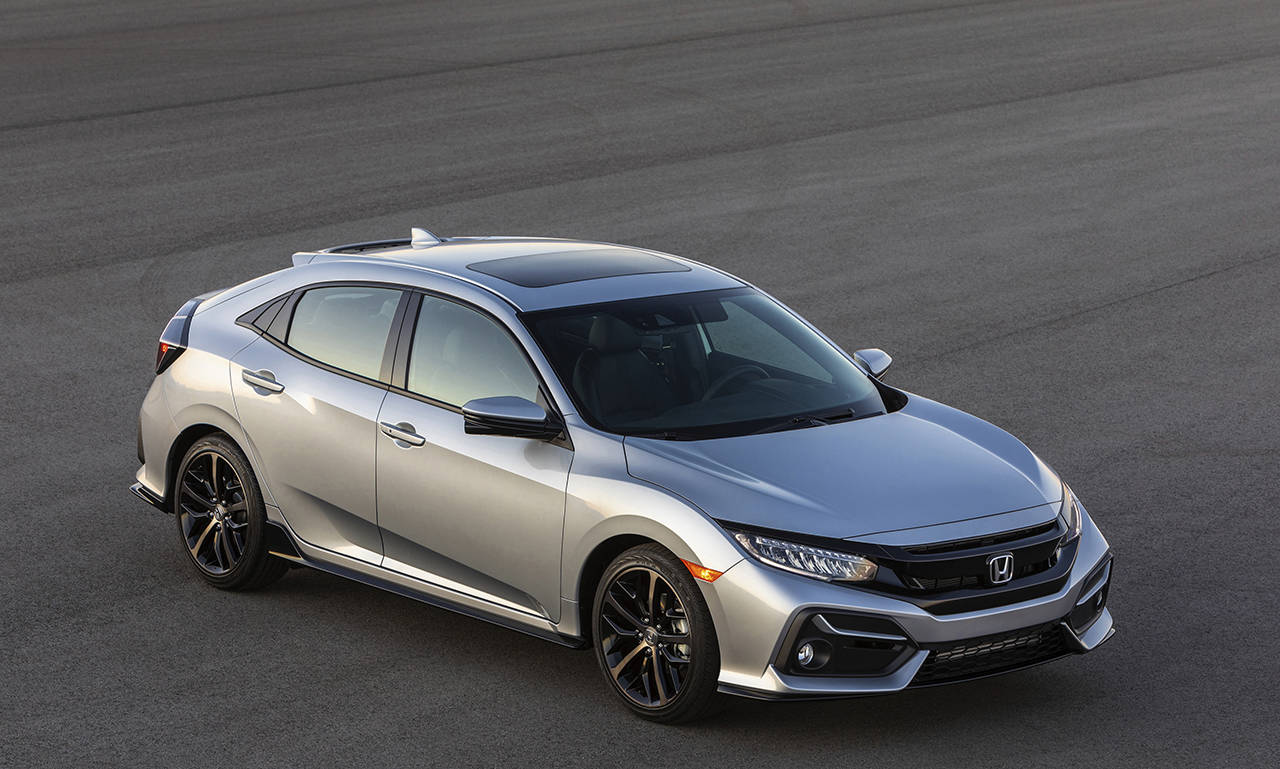Are you unsure about what kind of Honda Civic you have? Don’t worry, you’re not alone.
Many people find it challenging to identify the exact model of their Honda Civic. Understanding your car’s model is important for maintenance, repairs, and resale value. Honda Civics come in various models, each with unique features and specifications. Knowing your model can help you make informed decisions about parts, services, and upgrades.
This guide will help you identify your Honda Civic’s model and trim level, ensuring you get the most out of your vehicle. Let’s dive in and find out what kind of Honda Civic you have!

Credit: www.hondaofnewrochelle.com
Introduction To Honda Civic Models
The Honda Civic is a popular choice among car enthusiasts. Known for its reliability and style, it has been a favorite for decades. But with so many models, it can be hard to know which one you have. In this guide, we will help you identify your Honda Civic model.
Evolution Of The Honda Civic
The Honda Civic has seen many changes since its debut in 1972. Each generation brought new features and improvements. The first generation was a small, compact car. It was praised for its fuel efficiency. The second generation introduced a more powerful engine. It also had a more spacious interior.
The third generation came with a sportier design. It also had better performance and handling. The fourth generation brought even more power. It also had a more aerodynamic design. The fifth generation focused on safety. It included airbags and improved crash protection.
The sixth generation introduced new technology. It had features like anti-lock brakes and improved emissions control. The seventh generation brought a more modern design. It also had a more powerful engine and better fuel efficiency.
Importance Of Identifying Your Model
Knowing your Honda Civic model is crucial. It helps when buying parts or getting repairs. Each model has different specifications. Some parts may not fit all models. Identifying your model ensures you get the right parts.
It also helps when selling your car. Buyers want to know the exact model. It affects the car’s value and appeal. Knowing your model can also help with insurance. Different models have different insurance rates.
Identifying your model is simple. Check your owner’s manual or look at the vehicle identification number (VIN). The VIN can tell you the year, make, and model of your car.
Locating The Vin
Knowing what kind of Honda Civic you have can be crucial. One of the best ways to identify your car is through the Vehicle Identification Number (VIN). This unique code provides a wealth of information about your vehicle. Let’s explore how to locate and decode your Honda Civic’s VIN.
Where To Find The Vin
The VIN is a 17-character code that can be found in several places on your Honda Civic. Here are the common locations:
- Driver’s side dashboard: Look through the windshield on the driver’s side.
- Driver’s side door frame: Open the driver’s door and check the door frame.
- Engine block: The VIN is often stamped on the engine block.
- Vehicle registration: Your VIN is listed on your vehicle registration documents.
- Insurance documents: Check your insurance card or policy for the VIN.
Decoding The Vin
Once you have located the VIN, you can decode it to learn more about your Honda Civic. Here is a breakdown of what each segment of the VIN represents:
| Segment | Description |
|---|---|
| 1-3 | World Manufacturer Identifier (WMI): Identifies the manufacturer. |
| 4-8 | Vehicle Descriptor Section (VDS): Details about the vehicle model. |
| 9 | Check Digit: Validates the VIN. |
| 10 | Model Year: Indicates the year of the vehicle. |
| 11 | Plant Code: Shows where the vehicle was built. |
| 12-17 | Serial Number: Unique identifier for your specific vehicle. |
By understanding these segments, you can gain insights into your Honda Civic’s origins and specifications. Use this information to verify details, order parts, or when selling your car.
Recognizing Different Generations
Recognizing the different generations of the Honda Civic can be tricky. Each generation has unique features and designs. This guide will help you identify which generation your Honda Civic belongs to.
First Generation To Fifth Generation
- Compact size
- Boxy shape
- Small grille
- Slightly larger
- Rounded edges
- More interior space
- Wider body
- Angular design
- Improved aerodynamics
- Sleeker design
- Increased interior room
- Fuel-injected engines
- More aerodynamic
- Curved roofline
- Enhanced safety features
Sixth Generation To Current
- Refined styling
- Improved handling
- More engine options
- New body styles
- Improved fuel economy
- Upgraded interior
- Futuristic design
- Enhanced performance
- More tech features
- Modern styling
- Better ride comfort
- Advanced safety features
- Sporty look
- Turbocharged engines
- High-tech interiors
- Bold design
- Improved efficiency
- Latest technology
Identifying Body Styles
Determining the body style of your Honda Civic can be straightforward. Each style has unique features. This section will help you identify whether you have a Sedan, Coupe, Hatchback, or another variant.
Sedan Vs. Coupe
The Honda Civic comes in different body styles, primarily the Sedan and Coupe. The Sedan has four doors and a spacious interior. It is ideal for families and daily commuting. You can spot a Sedan by its longer, more stretched-out shape.
On the other hand, the Coupe has two doors. It has a sportier look and compact design. The Coupe often appeals to younger drivers or those who prefer a sleek, stylish vehicle. Here is a comparison table:
| Feature | Sedan | Coupe |
|---|---|---|
| Doors | Four | Two |
| Interior Space | More Spacious | Compact |
| Design | Stretched | Sporty |
Hatchback And Other Variants
The Honda Civic also offers the Hatchback variant. It features a rear door that swings upward. This style provides more cargo space, making it practical for carrying large items. The Hatchback is identifiable by its unique rear shape.
Besides these, the Civic also has performance-oriented variants like the Type R and Si. These models have distinctive sporty features. A Type R, for instance, has aggressive styling, red accents, and a larger rear spoiler.
- Type R – Sporty design, red accents, large spoiler
- Si – Performance enhancements, sport-tuned suspension
Engine Types And Specifications
The Honda Civic has been a favorite among car enthusiasts for decades. One reason is its variety of engine types and specifications. Understanding the differences can help you identify your Honda Civic model and its performance capabilities.
Common Engine Types
Honda Civics come with several common engine types. Each engine type has unique features and benefits.
- 1.5L I4 Turbocharged: Offers a balance of power and fuel efficiency.
- 2.0L I4: Known for its reliability and consistent performance.
- 2.0L I4 Turbocharged: Provides higher power for sportier models.
- 1.8L I4: A basic engine known for its durability.
Performance Differences
Performance varies between engine types. The following table highlights key differences:
| Engine Type | Horsepower | Torque (lb-ft) | Fuel Economy (MPG) |
|---|---|---|---|
| 1.5L I4 Turbocharged | 174 HP | 162 lb-ft | 32 city / 42 highway |
| 2.0L I4 | 158 HP | 138 lb-ft | 30 city / 38 highway |
| 2.0L I4 Turbocharged | 306 HP | 295 lb-ft | 22 city / 28 highway |
| 1.8L I4 | 140 HP | 128 lb-ft | 28 city / 36 highway |
For many drivers, the 1.5L I4 Turbocharged engine is a top choice. It provides a good mix of power and efficiency. On the other hand, the 2.0L I4 Turbocharged engine is ideal for those seeking higher performance.
Identifying your Honda Civic’s engine type helps you understand its capabilities. Check your car’s manual or look under the hood for engine details.
Trim Levels And Features
The Honda Civic is known for its variety of trim levels. Each trim offers unique features and upgrades. Understanding your trim level can help you appreciate your vehicle’s features and capabilities. Let’s dive into the details.
Base Models Vs. High-end Trims
The Honda Civic offers several trim levels. Base models include the LX and Sport. These trims provide essential features:
- Basic infotainment system
- Cloth upholstery
- Standard safety features
High-end trims like the EX, EX-L, and Touring offer more luxury:
- Advanced infotainment system with touchscreen
- Leather seats
- Additional safety and driver-assist features
Consider what features matter most to you. This will help you determine your trim level.
Special Editions And Packages
Honda Civic also comes with special editions and packages. These editions often include unique features and designs. For example:
- Sport Special Edition (Sport SE): Combines Sport trim features with added luxuries like heated seats and a power-adjustable driver’s seat.
- Black Edition: Offers blacked-out exterior accents and exclusive interior styling.
Packages, such as the Honda Sensing package, offer advanced safety features:
- Adaptive cruise control
- Lane-keeping assist
- Collision mitigation braking system
These special editions and packages can add unique value to your Honda Civic.
Interior And Exterior Features
The Honda Civic is known for its stylish design and advanced features. Understanding the interior and exterior features helps in identifying the model and year of your Honda Civic. This section will guide you through the key characteristics to look for.
Identifying Interior Features
Start with the dashboard. Does it have a touch screen display? Newer models often feature a digital display for ease of use. Check for seat materials. Are they leather or fabric? Leather seats are more common in higher trims.
- Steering Wheel: Look for audio controls and cruise control buttons.
- Infotainment System: Check if it supports Apple CarPlay or Android Auto.
- Climate Control: Is it manual or automatic? Automatic climate control is usually available in higher trims.
- Storage Compartments: Note the number and placement of cup holders and console storage.
Another key feature is the seating configuration. Some models have heated front seats. Sunroof availability can also help in identifying the model. Higher trims often come with a sunroof.
Recognizing Exterior Characteristics
Exterior features are distinct and can help pinpoint your Honda Civic model. Headlights are a good starting point. LED headlights are common in newer models. Examine the grille design. Each generation has a unique grille style.
- Headlights: LED or halogen? LED lights are brighter and more efficient.
- Grille: Check the shape and design. It varies by model year.
- Wheels: Look at the size and design of the wheels. Alloy wheels are common in higher trims.
- Tail Lights: Inspect the tail light design. It differs across generations.
- Badging: Look for trim level badges. They are usually located on the rear of the car.
Side mirrors can also provide clues. Some models have integrated turn signals. The presence of a rear spoiler can indicate a sportier trim. Finally, check for fog lights. They are often included in higher trims.
| Feature | Trim Level Indicator |
|---|---|
| Leather Seats | Higher trims like EX-L, Touring |
| Sunroof | Available in EX, EX-L, Touring |
| Alloy Wheels | Standard in most trims, especially higher ones |
| LED Headlights | Common in newer models and higher trims |
By examining these interior and exterior features, you can accurately identify your Honda Civic model and trim level. This knowledge is essential for maintenance, upgrades, and resale value.

Credit: www.hendrickcars.com
Comparing Similar Models
When trying to understand what kind of Honda Civic you have, it can help to compare it to similar models. This process can make it easier to identify the unique features of your Civic. Below, we will compare the Honda Civic to two other popular models: the Accord and the CR-V.
Differences Between Civic And Accord
The Honda Civic and Honda Accord are both beloved for their reliability and efficiency. Yet, they cater to different needs. The Civic is often preferred for its compact size and lower price point. It’s a great choice for city driving and fuel efficiency.
On the other hand, the Accord is a mid-size sedan. It offers more interior space and a slightly more powerful engine. This makes it ideal for families or those who need a bit more room. Here is a simple comparison:
| Feature | Honda Civic | Honda Accord |
|---|---|---|
| Size | Compact | Mid-size |
| Engine Power | Less powerful | More powerful |
| Fuel Efficiency | Higher | Lower |
| Price | Lower | Higher |
Comparing Civic To Cr-v
The Honda CR-V is an SUV, which makes it quite different from the Civic. The CR-V is larger, offering more cargo space and a higher seating position. This is perfect for those who need extra storage and like a commanding view of the road.
Meanwhile, the Civic remains a compact car. It’s easier to maneuver and park in tight spaces. Here’s a quick comparison:
| Feature | Honda Civic | Honda CR-V |
|---|---|---|
| Type | Compact Car | SUV |
| Space | Less Cargo Space | More Cargo Space |
| Seating Position | Lower | Higher |
| Fuel Efficiency | Higher | Lower |
Conclusion And Tips
Identifying your Honda Civic model can sometimes be tricky. But with the right methods, it becomes easy. This section aims to summarize those methods and offer additional resources to help you.
Summary Of Identification Methods
Identifying your Honda Civic involves several key steps:
- Check the VIN: The Vehicle Identification Number (VIN) gives you detailed information about your car. It is usually located on the dashboard near the windshield.
- Examine the Owner’s Manual: The manual often contains vital details about the model and make.
- Look at the Badges: The badges or emblems on the car can indicate the model and trim level.
- Inspect the Engine: Different models have varying engine types, which can help identify your Civic.
These methods are straightforward and effective. They help you understand your Honda Civic better.
Additional Resources
Here are some additional resources to assist you:
- Honda Official Website: Provides detailed information about different models.
- Online Forums: Communities like CivicX and Honda-Tech offer valuable insights from other owners.
- Car Identification Apps: Apps such as CarFax can help you decode the VIN and get detailed information.
- Local Dealerships: Your local Honda dealership can also provide specific information about your car model.
Using these resources can make the identification process easier and more accurate.

Credit: www.heraldnet.com
Frequently Asked Questions
How Can I Identify My Honda Civic Model?
You can identify your Honda Civic model by checking the Vehicle Identification Number (VIN) located on the dashboard or driver’s side door. The VIN provides specific details about your car, including the model, year, and manufacturing plant.
Where Is The Vin Located On A Honda Civic?
The VIN on a Honda Civic is located on the driver’s side dashboard near the windshield. It is also found on the driver’s side door frame. This number provides crucial information about your vehicle.
What Does My Honda Civic Vin Tell Me?
Your Honda Civic VIN reveals the model, manufacturing year, engine type, and the plant where it was assembled. It is a unique identifier that provides detailed information about your car’s specifications.
Can The Vin Indicate The Trim Of My Honda Civic?
Yes, the VIN can indicate the trim of your Honda Civic. Specific characters within the VIN provide details about the trim level, engine type, and other features. Use a VIN decoder to get these details.
Conclusion
Identifying your Honda Civic model is important. It helps with maintenance and upgrades. Check your car’s VIN number and user manual. Look at the design features and badges. These clues will confirm your model type. Understanding your Civic ensures proper care and maximizes its lifespan.
Enjoy the drive, knowing your Civic inside out.
